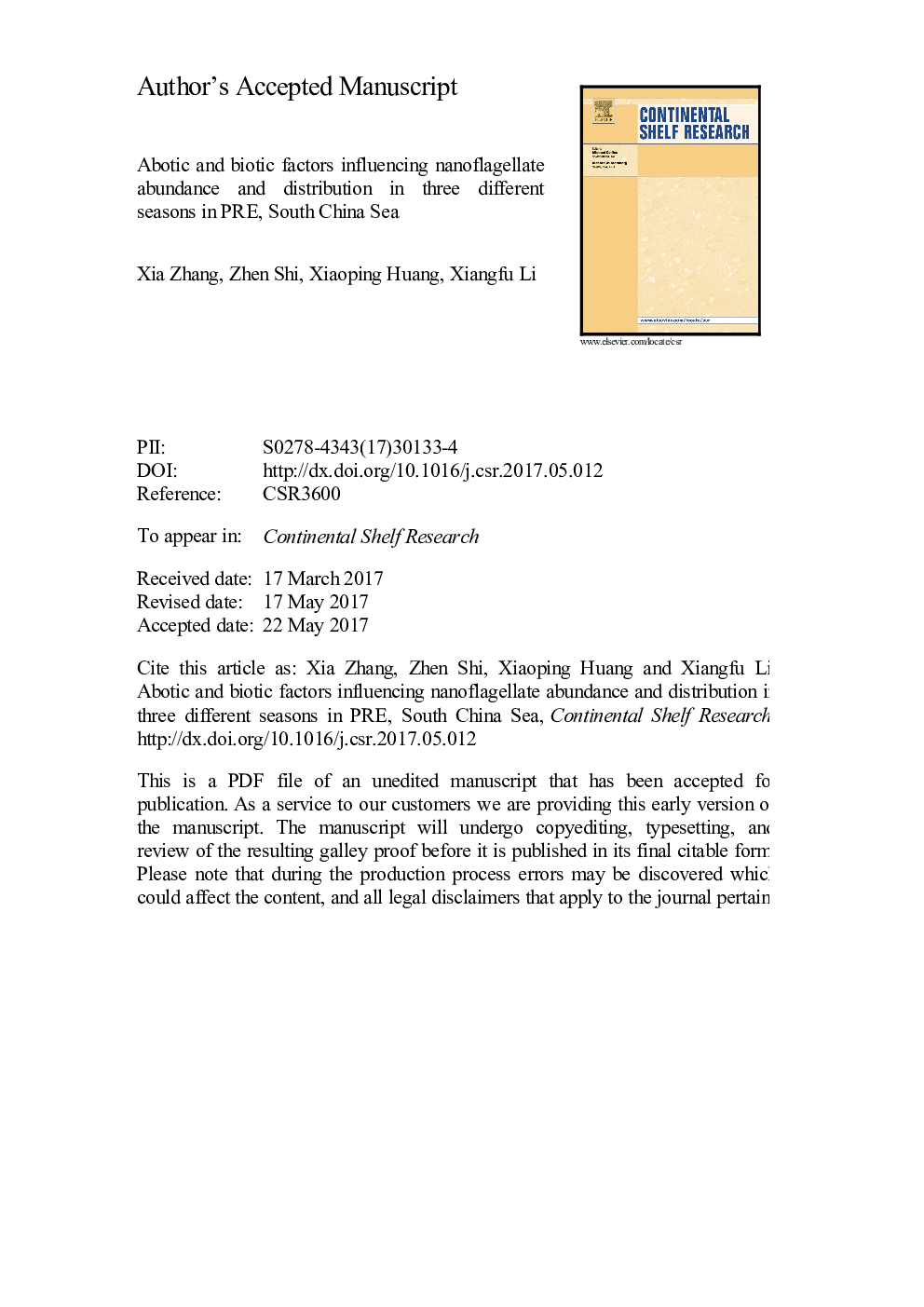| Article ID | Journal | Published Year | Pages | File Type |
|---|---|---|---|---|
| 5764381 | Continental Shelf Research | 2017 | 27 Pages |
Abstract
Spatial distribution characteristics of two nanoflagellate groups, together with physico-chemical and biological factors, were studied in three seasons in the Pearl River Estuary (PRE), South China Sea. Nanoflagellates were more abundant in warm periods than that in winter. The average abundance in the three observations (spring, summer and winter) was as follow: 1.28 ± 1.17, 0.88 ± 1.02 and 0.28 ± 0.23 à 103 cells mlâ1 of heterotrophic nanoflagellate (HNF), and 1.26 ± 0.85, 0.89 ± 0.77 and 0.65 ± 0.52 à 103 cells mlâ1 of pigmented nanoflagellate (PNF). In our three studied seasons, NF density was generally higher in the inner estuary and decreasing to the lowest in the outer estuary. Our results suggested that PNF classes were more sensitive than HNF groups to freshwater discharge. The proportion of PNF gradually increased from spring (49.7%) to winter (67.7%), with the river flow was accordingly decreasing. Moreover, spatial distribution pattern in three seasons showed the response of PNF populations to freshwater input was similar to phytoplankton assemblages in the PRE. Total bacterial and live bacterial abundance (measured by LIVE/DEAD kit) were associated with both two NF components, which implied that NF was a potential predator controlling the bulk abundance of bacteria and proportion of active cells. These results revealed the seasonal and spatial variations of NF abundance in diverse conditions in the PRE and how their response to different ecological processes.
Related Topics
Physical Sciences and Engineering
Earth and Planetary Sciences
Geology
Authors
Xia Zhang, Zhen Shi, Xiaoping Huang, Xiangfu Li,
